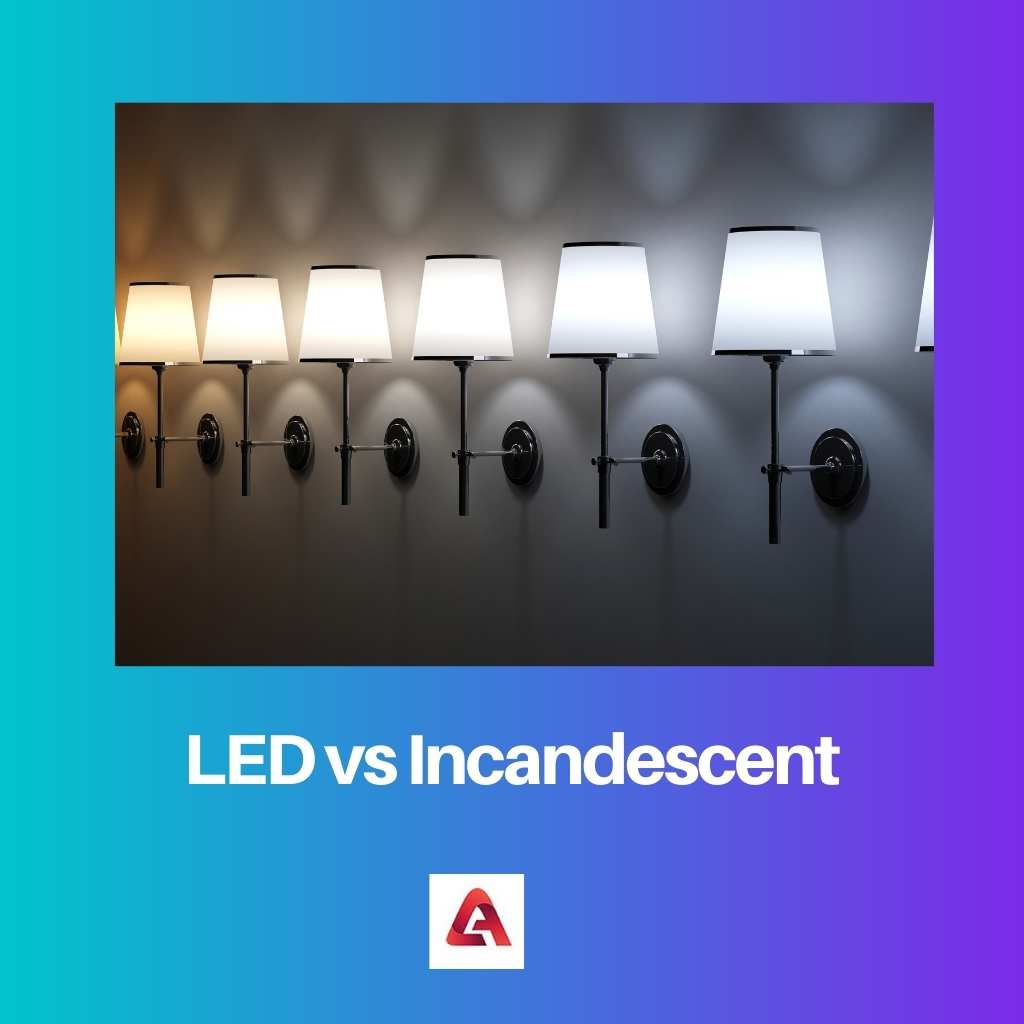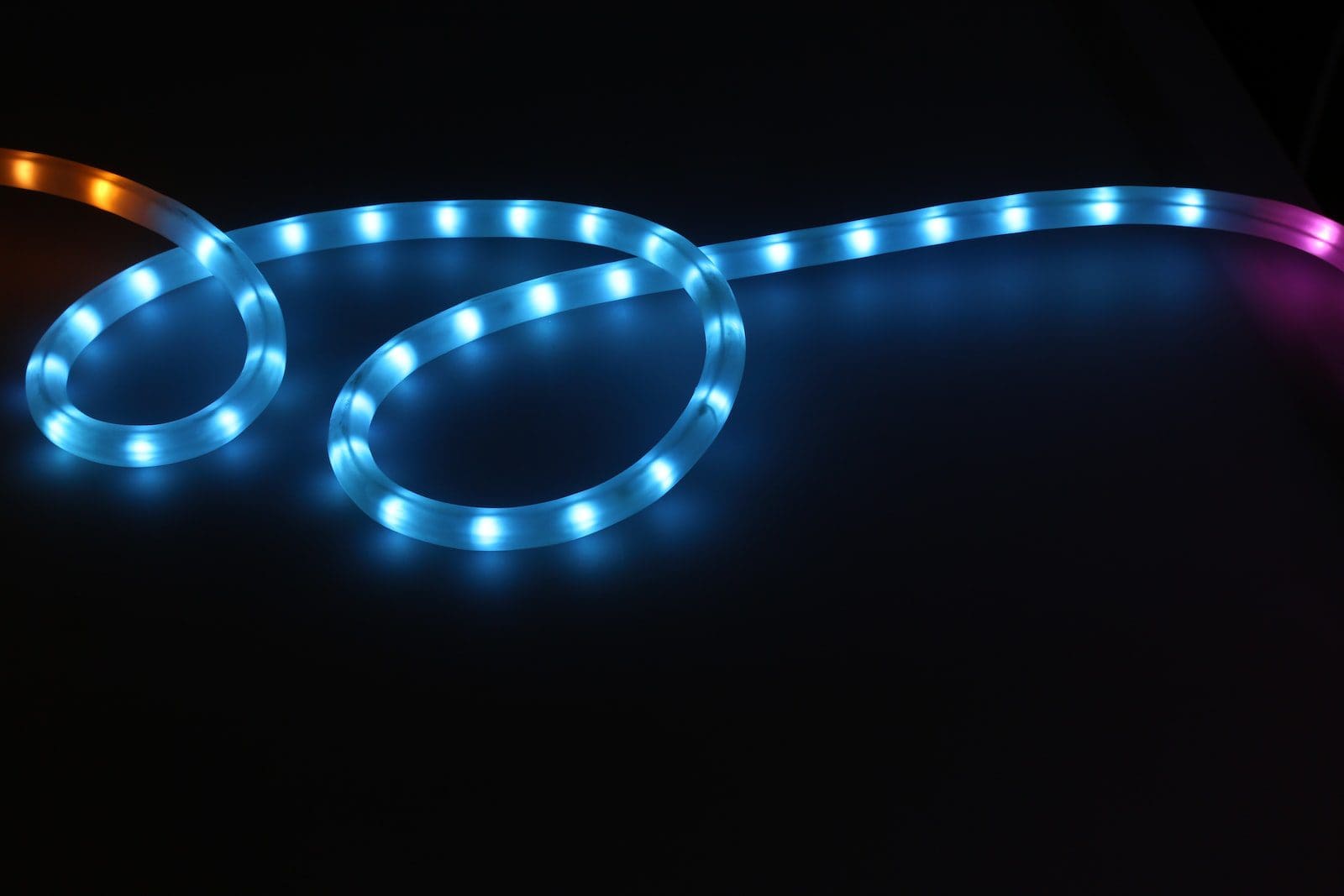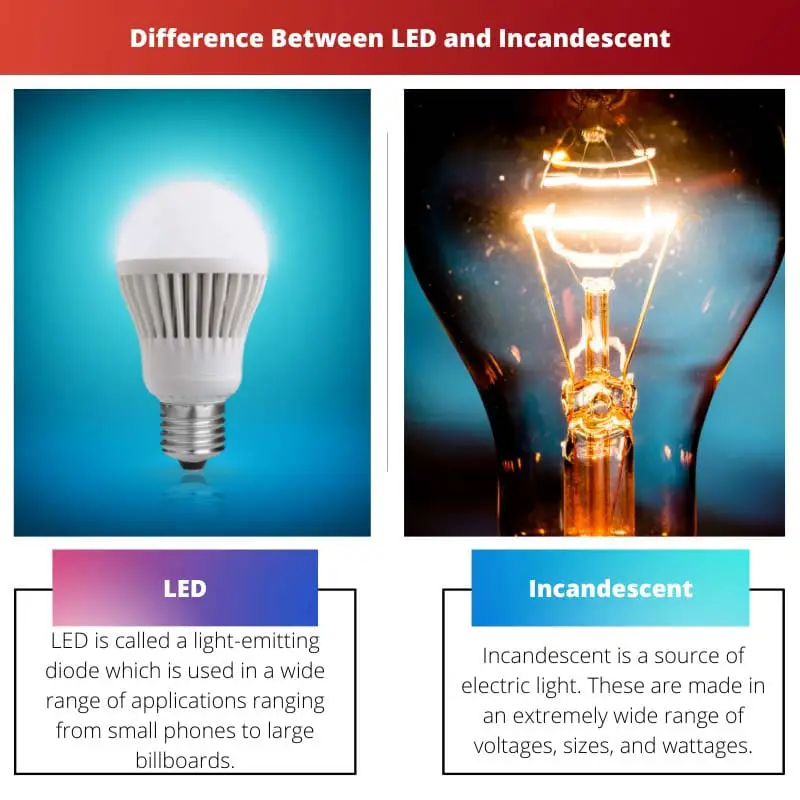LED and incandescent bulbs are used by many people depending on their requirements. Among these two, LED is preferred by many people because of its benefits and its energy efficiency.
These two things are not available in incandescent bulbs. This makes people switch from incandescent bulbs to LED.
Even though the price of LED is higher than incandescent bulbs, their life span is longer.
Key Takeaways
- LED (Light Emitting Diode) bulbs are energy-efficient, long-lasting light sources that emit light by passing a current through a semiconductor. In contrast, incandescent bulbs produce light by heating a metal filament.
- LED bulbs consume less energy and have a longer lifespan than incandescent bulbs, making them more cost-effective and environmentally friendly.
- Although less efficient and shorter-lived, incandescent bulbs produce a warmer, more familiar light quality that some users prefer over the cooler, more focused light of LEDs.
LED vs Incandescent
LED lighting, is a type of lighting which uses a semiconductor to convert electrical energy into light. It’s lights are more energy-efficient and have a longer lifespan. Incandescent lighting is a type of lighting that passes electric current through a filament, which heats up and produces light.

LED is called a light-emitting diode which is used in a wide range of applications ranging from small phones to large billboards. They find applications that display different types of data and also show the time.
Light will be produced when the particle carries the current, which are holes and electrons, and they combine them within a semiconductor material.
Incandescent is a source of electric light. These are made in an extremely wide range of voltages, sizes, and wattages.
Incandescent bulbs look good because they can emit light in different colors. These bulbs are very bad energy consumers.
Their energy is mainly lost as heat. All these things cost a lot.
The white-hot filament in the light bulb is an example of incandescent bulbs.
Comparison Table
| Parameters of Comparison | LED | Incandescent |
|---|---|---|
| Filament | It does not have a filament. | It has a filament. |
| Advantages | They have good energy efficiency. | Due to the initial cost, it is less expensive. |
| Disadvantages | Overheating can reduce its life. | It has a short life span. |
| Colors | It produces subsets of colors that are visible. | It produces different colors. |
| Evolution | 1962 | 1879 |
What is LED?
It is a semiconductor device that emits light when current flows through it. The working principle used in LED is Electroluminescence.
The pin configuration used in them is anode and cathode. In this, the electric current will pass through a microchip.
It illuminates tiny sources of light, which we call LEDs, and the result is visible light. Their lighting products are 90% more efficient than other light bulbs.
It glows even for a small or low value of current.
The reason why people use LED is it is highly energy efficient. It gives more light less heat at a lower cost. It can make a big impact on energy use.
The main components inside a LED bulb are an LED chip, the LED chip lights that are inside the bulb, the driver, heat sink, and optic lens. The heat sink is used for drawing the heat away from the LED chip.
The color of semiconductor material used in LED is white, and the wavelength is 450nm.
There are 9 different types of LED available such as Dimmer switches, LED tubes for lighting, COB LED, Traditional and Inorganic LEDs, Color LED, SMD LED, Graphene LED, and Maximum Brightness LEDs.
Some of the benefits of using LED are it has a long lifespan, improved environmental performance, no heat or UV emissions, low voltage operation, has energy efficiency, has the ability to operate in cold conditions, and design flexibility.

What is Incandescent?
It is an electric light with a wire filament. The filament will be heated until it glows and is enclosed in a glass bulb with inert gas or vacuum to protect the filament from oxidation.
The molecules are simply lost in an ordinary incandescent bulb. They wind up inside the glass shell.
This makes the older incandescent bulb look yellow and dimmer than a new one. Also, when it loses molecules, the filament wire will start to shrink.
At some point, it will wind up very thin that they cannot carry current anymore, which further leads to overheating and eventually breaks. This means the light bulb is blown and we should replace it.
To extend their standard life, manufacturers build them with less heat than the optimum temperature for producing clear light. This makes them emit a lot of energy that is used in the infrared portion of the spectrum.
It does no good for seeing and is a waste of energy unless we throw the heat away. They are considered bad because LED performs better work than incandescent bulbs.
People use LED and incandescent bulbs in the same fixture. But this is not recommended in all cases.
Because it can cause the LED lights to flicker, and in some worst cases, it damages the bulb fixture or LED bulbs when they are older.
These bulbs are mainly used in desk lamps, hallway lighting, accent lighting, table lamps, closets, and chandeliers.

Main Differences Between LED and Incandescent
- LED bulbs are expensive when compared to incandescent bulbs. On the other hand, incandescent bulbs are less expensive than LED bulbs.
- LED is efficient and requires low maintenance costs. On the other hand, incandescent bulbs are not efficient as it wastes energy by producing heat in a low amount.
- LEDs don’t use filament. On the other hand, Incandescent bulbs use filament.
- The advantage of using LED is it has good efficiency. On the other hand, the advantage of using incandescent is due to its initial cost. The price is not high.
- The downside of LED is overheating can reduce the lifetime. On the other hand, the downside of incandescent is the life span is short, which is close to 1000 hours.

- https://www.tandfonline.com/doi/abs/10.1080/00140139408963712
- https://www.spiedigitallibrary.org/conference-proceedings-of-spie/3002/0000/High-luminance-LEDs-replace-incandescent-lamps-in-new-applications/10.1117/12.271036.short
